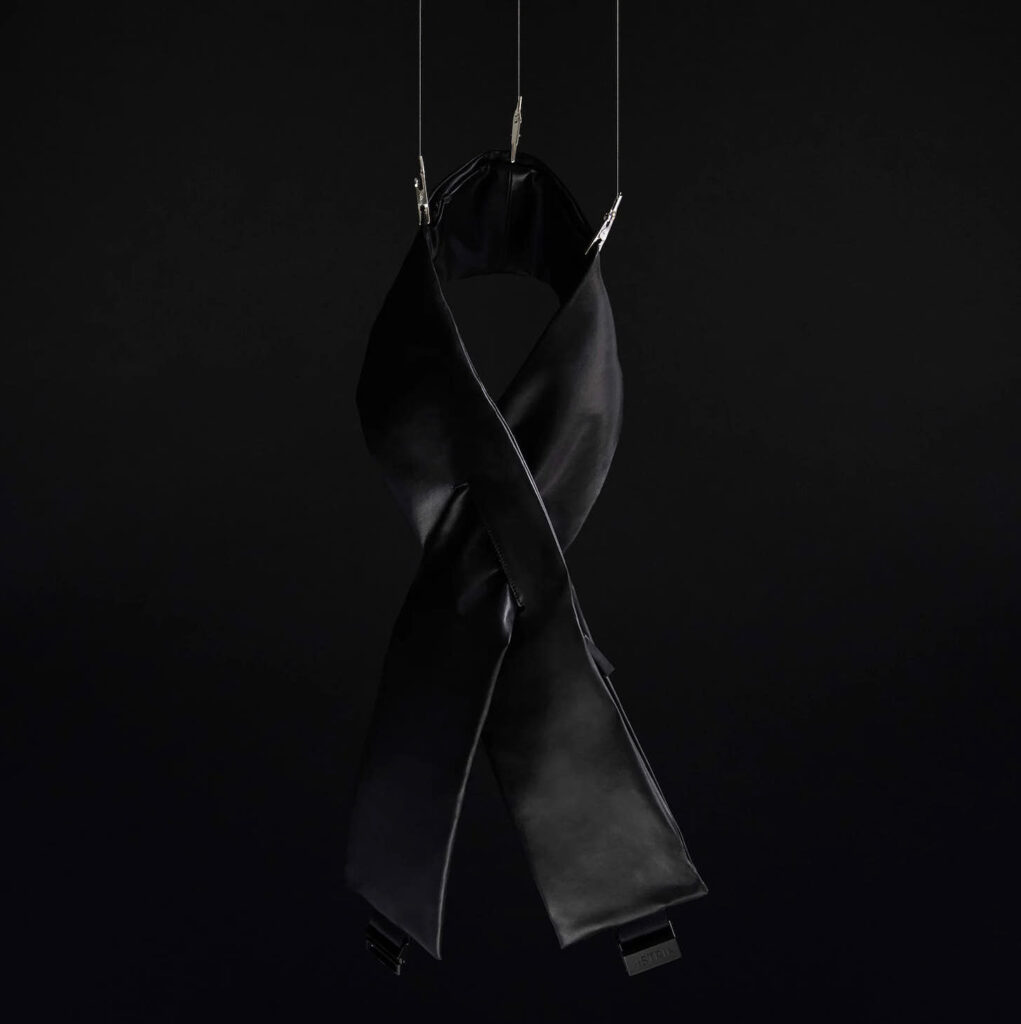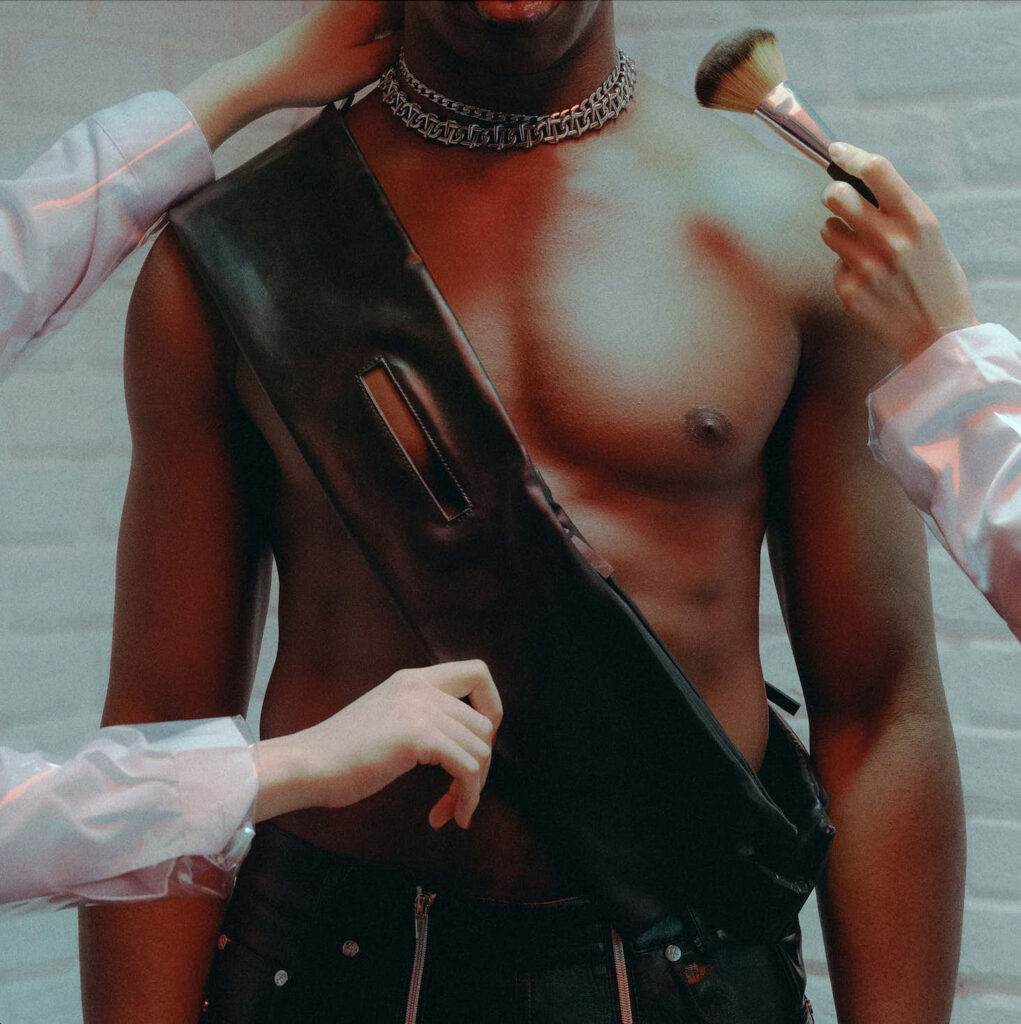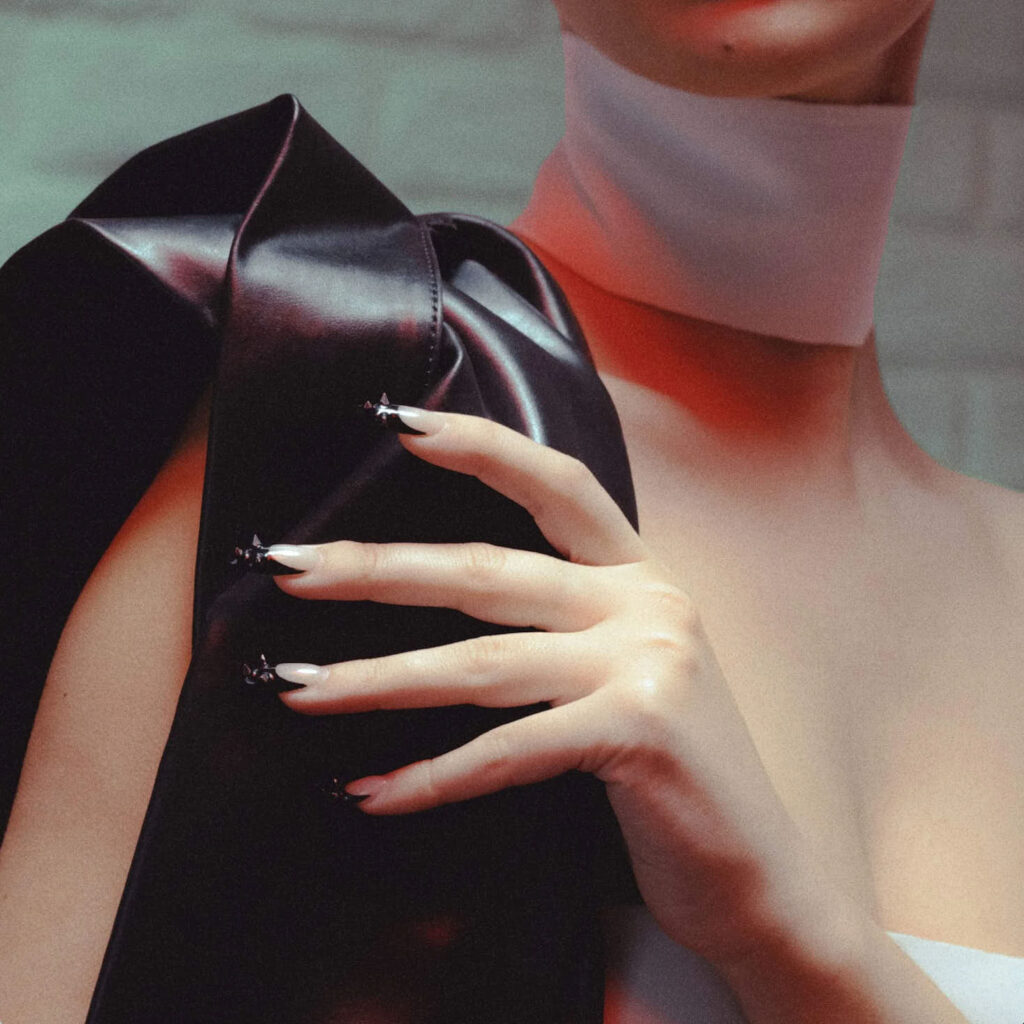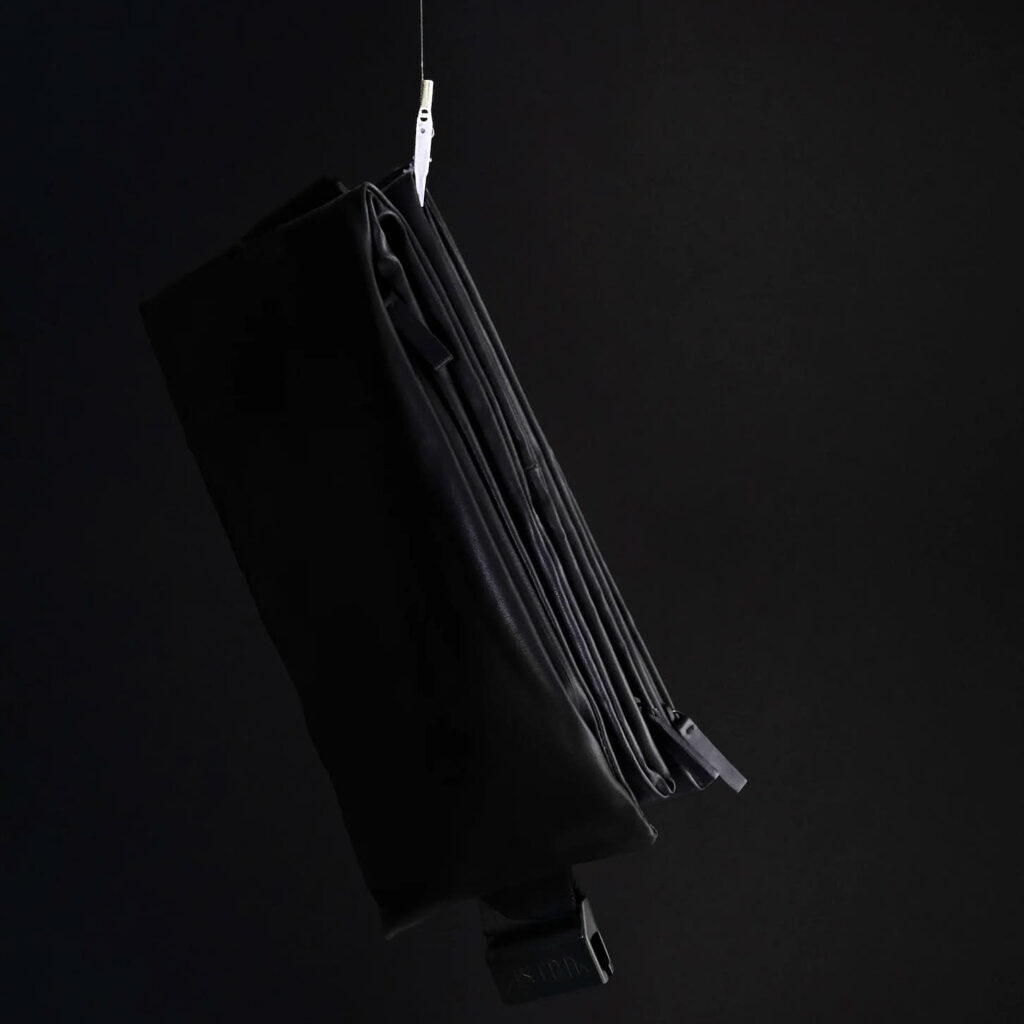“We saw a reluctance to challenge the status quo”
How Astria is evolving the accessory market
“Accessories are an extension of our bodies – they move with us, adapt to us, and become part of our daily rituals. They’re not just decorative; they serve as functional expressions of who we are and how we navigate the world,” Claudio Pagani, founder of Astria, explains to The Cold Magazine.
At its very core, Astria is a celebration of the multifaceted nature of an accessory: not an object designed to complement fabrics, textures, and colours; but an artefact that encourages communication, identity and stature. The unique brand sharply condones all that an accessory is and should be, and with its commitment to full creative freedom, uniqueness, and transparency – even down to the very material of the stitching – their launch this season marks a new wave in the accessory market.
Birthed amongst the cobbled streets of Milan, Astria is a creative space for designers to unleash their deepest, darkest creative juices. Each season, they cherry-pick a renowned designer to bring their ideas to life and create an accessory – of what Claudio refers to as a ‘masterpiece’ – as part of its archive collection. It’s first piece on the market is ASTRIA/001, designed by Alessandro Onori, a notorious designer from the Milan scene. The piece is an agglomeration of sex, versatility, and style, and, even better, is made from Mirum, a plastic-free alternative to leather.
In light of their first launch, Claudio explains how Astria is “challenging the status quo” in the accessory market, why sustainability is a primal necessity to the brand, and more importantly, why exotic leathers “are not sexy.”

The Cold Magazine (CM): To start could you tell us a bit about yourself, your background and how you found your way into the fashion world?
Claudia Pagini (CP): Fashion has always been part of my world. I grew up in my mother’s bridal atelier, surrounded by craftsmanship. Fashion was her language, and after losing her early in my teenage years, it became a way for me to continue our conversation.
After university, I found myself in Milan, working at an art direction studio with the Prada Group as a main client – an experience that sharpened my eye for detail and storytelling. From there, I spent many years at Adidas in the US, navigating the intersection of culture and innovation, and eventually working on high-profile collaborations. Each step felt like a natural progression, reinforcing my belief that fashion isn’t just about objects, but it is a way for people to communicate who they are and what they stand for.
CM:Who/what would you cite as the main inspirations that pushed you to launch Astria, specifically as an accessory brand?
CP: The inspiration for Astria took shape while working within established systems. We saw a reluctance to challenge the status quo, even when the resources were there to do so. The focus was singular – profit and power – often at the expense of creativity, creative voices, and meaningful environmental progress. There was little space for true innovation. Astria emerged as a response, a guiding light.

CM: Your manifesto is beautiful to read. Tell me a bit more about what these words mean to you and how they fit in with the vision of the brand.
CP: Thank you! Gladly so – Astria is dedicated to shaping a more harmonious and enduring future. More than a brand, Astria is a living manifesto—an invitation to rethink the possibilities of creation and collaboration in an age of urgency. Rejecting the ephemeral cycles of fashion, Astria presents an alternative: singular, iconic works conceived as timeless artifacts.
Each piece emerges from a collaborative process with designers, who are invited to create a definitive masterpiece. These works are issued as part of a serialised archive, each marked with a unique number. This invites reflection on the interconnectedness of the past, present, and future. While creating, we pick the best materials available to us and then we communicate our choices transparently.
CM: What sets your brand apart from others in the industry? How are you different, and what difference do you hope to make?
CP: What sets us apart from others in the industry is our method to unleash creative power. On top of that, we think that through transparency we will be able to establish trust with our suppliers, helpers, stores, and ultimately the people who buy us.
CM: ASTRIA/001 is your first accessory on sale. Why did you select this accessory and how does it align with your brand’s manifesto?
CP: ASTRIA/001 is a breakthrough in versatility. With three pockets and multiple ways to wear it, it functions as a shoulder fanny pack, a scarf, a shoulder bag, or even a belt. The choice is yours.
We crafted it using Mirum or 100% cotton denim, and recycled plastic – every detail accounted for, down to the thread, as outlined in our product sheet. The only exception? The zippers are made of virgin plastic.

CM: Is there any subject matter that inspired you to handpick this accessory?
CP: Alessandro Onori, a well-known designer from the Milan scene, created ASTRIA/001 for us. The brief was to ‘create a break-through bag.’ We are glad to say we have fully achieved that objective.
In his words, “ASTRIA/001 was born from my fascination with the scarf. A functional yet creative accessory, one that leaves room for interpretation by the wearer. With ASTRIA/001, I wanted to create a bag as versatile as a garment, one that could seamlessly integrate into the wardrobe, like a second skin.”
CM: What function do you believe accessories serve? How do you interpret an accessory, and how do you want the fashion world to interact with them?
CP: Accessories are an extension of our bodies – they move with us, adapt to us, and become part of our daily rituals. They’re not just decorative; they serve as functional expressions of who we are and how we navigate the world. We see them as tools for self-expression, identity, and utility.
Our hope is that the fashion world moves beyond trends and embraces accessories as dynamic, personal objects that evolve with the wearer rather than being disposable statements.
CM: Astria channels its focus on mindful choice, especially when it comes to environmental impacts.
Your manifesto reads: “Our approach is to lay bare everything, both the positives and negatives of our production processes…Astria’s ultimate goal is to foster greater harmony in an increasingly polarised world.”
Why is sustainability important to you?
CP: For us, sustainability is not a marketing tool but rather our own responsibility. We prefer to talk about reducing impact, as completely cancelling environmental impact is hardly feasible. We want our customers to trust that we will provide as much information as possible about what they are buying.
For example, when evaluating denims recently, we found that ‘AF’ (altre fibre/other fibers) was used to conceal plastic in the composition. Sustainability, for us, means due diligence and trust.

CM: To compliment this, what does mindful choice look like to you? How does this factor into your decision process when you select designers’ work?
CP: We believe that creativity requires both space and time. When creatives are expected to develop hundreds of SKUs multiple times a year, they aren’t given that. At Astria, we give designers one piece to create, according to their own vision. We carefully select designers and collaborate with them to bring their ideas to life.
CM: Do you think the accessory market has evolved, and if so, how do you believe Astria will contribute to its evolution?
CP: Yes, it has, but not necessarily in a positive direction. Exotic leathers are still seen as sexy, but what people do not realise is that materials like 0.6 Mirum can actually be rarer and more expensive than crocodile skin or the finest fabrics from the best textiles in the world.
The value and exclusivity of such materials lie in their craftsmanship, sustainability, and the innovation behind them, which often goes unnoticed. Being first to a new material should be seen as sexy in our opinion.
CM: Looking forward, what excites you most about your work and future collections? Any long-term visions for the brand?
CP: We have a lot in the works! ASTRIA/002 is currently at the sample stage, and we’re excited to bring Robin Deceuninck’s innovative vision to life. We are particularly proud of how his expertise in accessories, including his experience with brands like 032c for Adidas and Y-3 and Ann Demeulemeester, which is translating into a product that is both forward-thinking and grounded in craftsmanship.
Alongside this, we’re also in the midst of a few collaborations with more established brands that are taking notice of what we’re building and are eager to be involved.

Words by Holly Downes
Interview with Claudio Pagani
Edited by Lily-Rose Morris-Zumin
